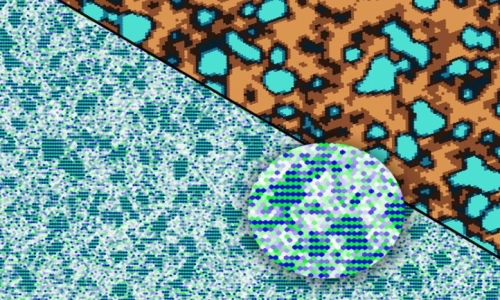


 5:29:42
5:29:42  2024-08-26
2024-08-26  1521
1521

You may recall lessons in elementary school in which you were asked to note the differences between two items. For example, what is the difference between a horse and a car? Or, which one of the following doesn’t belong: triangle/square/surface/oval? A lot of our early education was focused on the differences between certain facts. There’s nothing wrong with that, except that when we look for differences, the focus is typically on logical thinking. On the other hand, when we look for similarities, the focus shifts to creative thinking.
Here's an example: What are the similarities between a brick and a rubber band? At first glance, that seems to be an impossible task. “There’s nothing similar between those two items,” you might exclaim. But, dig a little deeper and you will begin to see possibilities. Here are a few similarities for your consideration:
By looking for connections between two very dissimilar objects, you are exercising your creative potential. Instead of looking for the obvious (as you were asked to do in school), with this re-framing you are looking for the less obvious, the less certain, and the less recognizable. This is creativity at its finest.
Try some of the following exercises. What are three similarities between:
Reality Of Islam |
|

By applying

Stanford, C

A new study

Researchers
 9:3:43
9:3:43
 2018-11-05
2018-11-05
10 benefits of Marriage in Islam
 7:5:22
7:5:22
 2019-04-08
2019-04-08
benefits of reciting surat yunus, hud &
 9:45:7
9:45:7
 2018-12-24
2018-12-24
advantages & disadvantages of divorce
 11:35:12
11:35:12
 2018-06-10
2018-06-10
 6:0:51
6:0:51
 2018-10-16
2018-10-16
 3:42:22
3:42:22
 2021-12-24
2021-12-24
 9:50:37
9:50:37
 2023-02-28
2023-02-28
 10:55:53
10:55:53
 2022-06-13
2022-06-13
 8:30:23
8:30:23
 2022-03-03
2022-03-03
 10:35:40
10:35:40
 2022-05-26
2022-05-26
 6:14:17
6:14:17
 2018-06-21
2018-06-21
 8:4:21
8:4:21
 2022-01-08
2022-01-08
 5:41:46
5:41:46
 2023-03-18
2023-03-18
| LATEST |